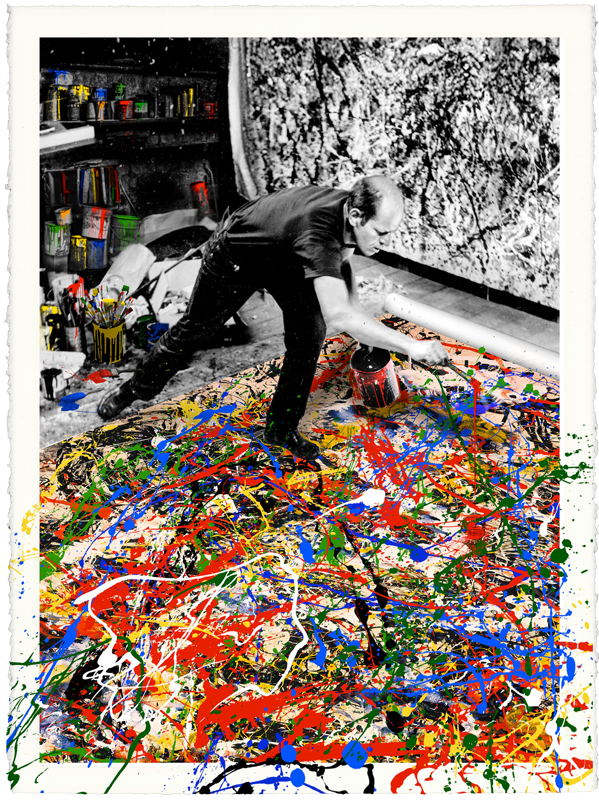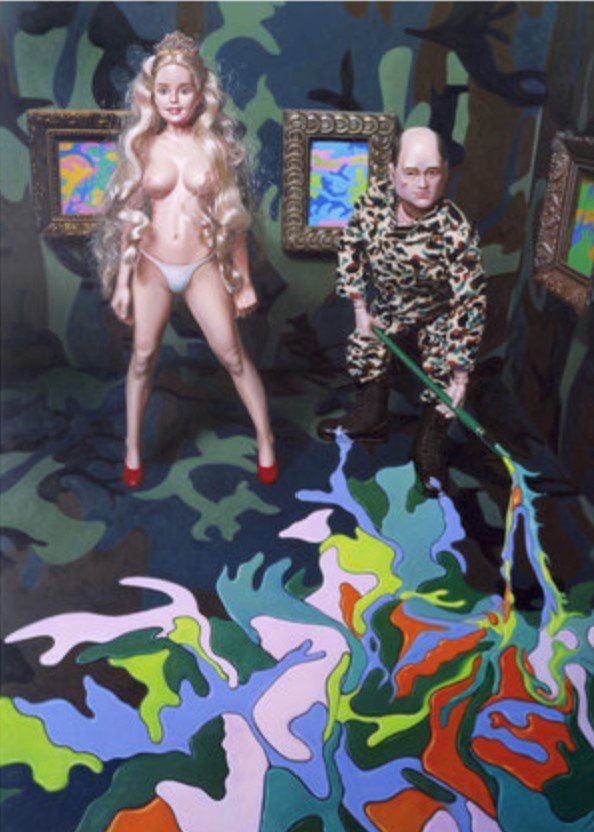Freedom Art HPM Acrylic Silkscreen Print by Mr. Brainwash- Thierry Guetta Screen Print on Hand Deckled Fine Art Paper Limited Edition Pop Street Art Artwork.
2024 Signed & Numbered Hand Applied Acrylic Paint HPM Embellished Limited Edition of 75 Artwork Size 22x30 Jackson Pollock Drizzle Art Tribute.
Embracing the Vibrancy of Street Pop Art and Tribute to Jackson Pollock
Street Pop Art and Graffiti Artwork have taken bold strides in the modern art narrative, mainly through the contributions of artists who challenge conventional aesthetics. Thierry Guetta, known by his moniker Mr. Brainwash, is one such artist who infuses his work with the spirit of street art culture. His "Freedom Art HPM Acrylic Silkscreen Print" is a direct homage to the legendary Jackson Pollock, renowned for his signature drizzle painting technique. This piece is a limited edition work featuring a four-color screen print on hand-deckled fine art paper, imbued with the energy and anarchic spirit synonymous with Pop Street Art.
The Distinctive Artistry of Mr. Brainwash
Thierry Guetta, operating under the pseudonym Mr. Brainwash, is a street artist of repute whose work is often characterized by its provocative nature and the fusion of pop culture with street art aesthetics. Born in France and now based in the United States, Mr. Brainwash has significantly impacted the Street Pop Art & Graffiti Artwork scenes. The "Freedom Art HPM" perfectly illustrates his approach to art: taking recognizable elements from popular culture and history and then remixing them with street art's raw, expressive techniques. In this limited series of 75, the "Freedom Art HPM" represents a unique synthesis of Mr. Brainwash's style with the dynamic energy of Jackson Pollock's action painting. Each piece is not just a print but is enhanced with hand-applied acrylic paint, making every print within the edition a one-of-a-kind piece. The substantial size of 22x30 inches allows the vivacity and motion of the drizzle technique to be fully appreciated, lending each work a sense of movement and spontaneity deeply ingrained in the ethos of street art and the legacy of Pollock.
A Contemporary Tribute to Jackson Pollock
The "Freedom Art HPM" by Mr. Brainwash is a contemporary tribute to Jackson Pollock, an artist who revolutionized the art world with his abstract expressionist techniques. By incorporating Pollock's renowned drizzle style into his screen prints, Mr. Brainwash pays homage to a figure whose work was, in many ways, a precursor to the uninhibited, free-form expressions found in street art. The hand-applied acrylic embellishments bridge the mechanical process of screen printing and the human touch inherent in the act of painting, echoing Pollock's emphasis on the physical act of art-making. In this series, Guetta captures the essence of Pollock's artistry while infusing it with his street art sensibility, creating a dialogue between two art forms that, though separated by decades, share a common thread of rebellion against the traditional. The "Freedom Art HPM" pieces embody the spirit of innovation and the bold departure from norms that both artists champion. Collectors and enthusiasts of both abstract expressionism, Street Pop Art, & Graffiti Artwork find a celebration of the fearless exploration of art and the breaking of boundaries in these prints.
The Legacy of Street Art in Modern Expressionism
As Street Pop Art & Graffiti Artwork continues evolving, artists like Mr. Brainwash exemplify the ongoing dialogue between contemporary street art and the broader spectrum of modern art. The "Freedom Art HPM" pieces represent more than just aesthetic beauty; they stand for the ongoing pursuit of freedom in artistic expression, honoring the past while continuously pushing toward the future. Each hand-embellished print is a visual spectacle and a piece of narrative, telling the story of art's relentless drive to defy, redefine, and express. With the "Freedom Art HPM" series, Thierry Guetta has created more than a mere series of prints; he has crafted a lineage that connects the radical expressionism of Jackson Pollock to the vibrant and ever-changing world of street art. This collection, limited in edition but boundless in impact, is a testament to the transformative power of art, celebrating its capacity to challenge, inspire, and reflect the complexity of the human experience through bold colors, form, and movement. Through this work, Mr. Brainwash continues to shape the pulse of Street Pop Art & Graffiti Artwork, securing his place in the continuum of artists who refuse to remain silent in their quest for creative emancipation.
Read
more
less









